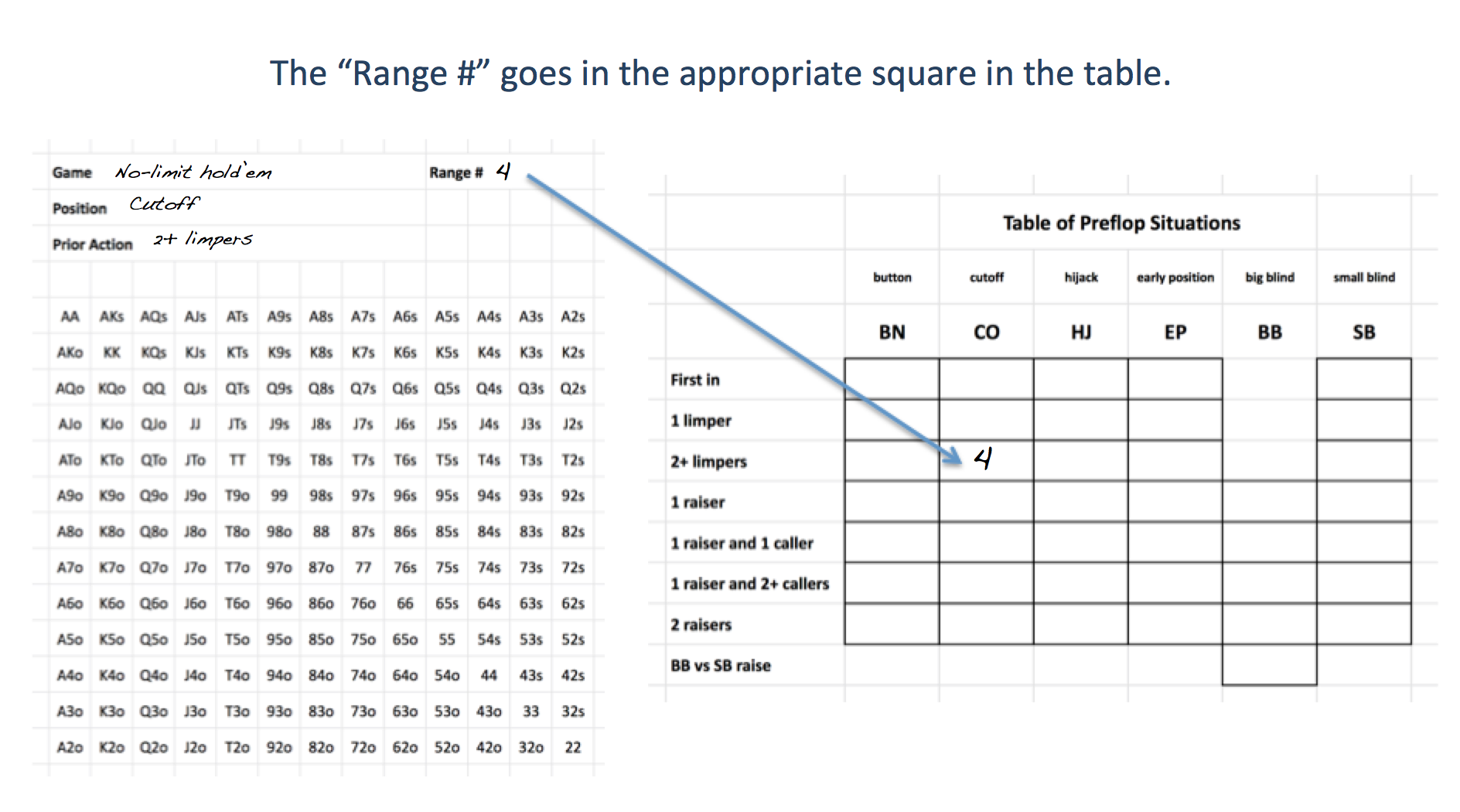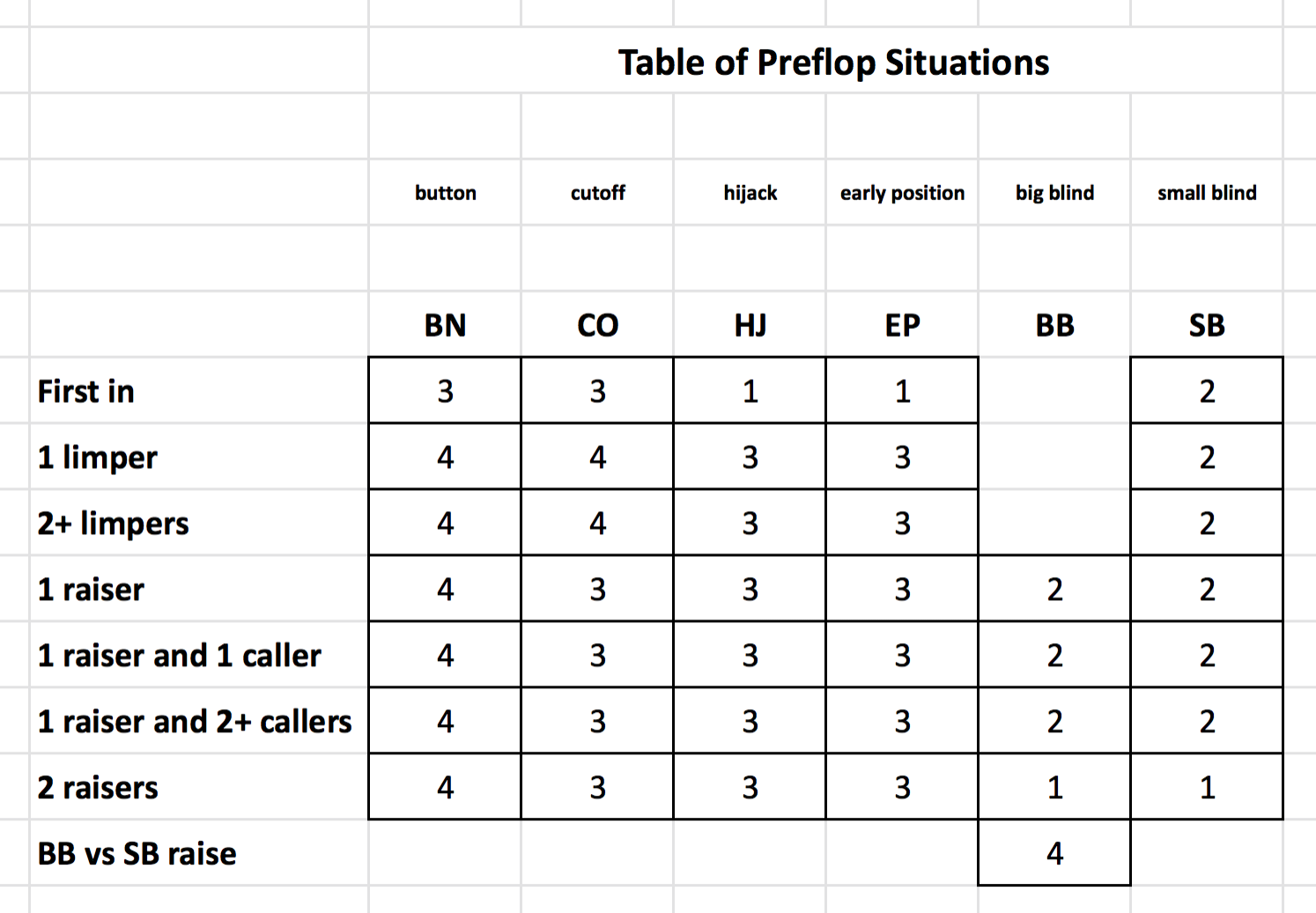
What to expect
This drill will force you to examine all of your preflop folds. You alone will need to provide reasoning – however whimsical or sound – in support of your choices. This tough task will reveal to you which plays you make that you think you should never make. That’s powerful information that comes with powerful benefits. I’ll get to those, right after this…
What are Auto-fold Ranges?
Auto-fold ranges are hands you always intend to fold before the flop in a given situation. If you intend to always fold 8-3 offsuit under-the-gun no matter how your opponents are playing, then that hand goes in your auto-fold range for “hold’em, under the gun.”
The hands outside of your auto-fold range make up your “it depends” range. With those hands, you might fold, you might call, or you might raise, depending on player tendencies and other variables.
Plugging leaks, for real, for good
Think of your auto-fold charts as a water-tight seal that will keep you from leaking.
It’s your big blind. The button opens. He could have any hand. The small blind folds. What’s the worst 9-high hand you should defend with? 98? 97? 94? What about suitedness?
There’s a raise and a caller. You’ve got J-9 suited in middle position. Do you think you should ever play that hand in that spot?
When you do this exercise, you are not in search of ultimate poker correctness. What you are doing is rooting out your C-game, so you can lop it off.
Imagine yourself writhing in poker despair. Every big pair, cracked. Every flush draw either misses, or you get there and get felted. For days.
What if…
What if no matter how many losing hands or losing sessions you had in a row, you always honored your auto-fold ranges? How many drippy leaks would that plug over a lifetime? Hundreds? Thousands?
What if you played every session watertight? No preflop leaking. What would that do to your score?
Do you think you could do it?
I don’t know either. But I do know you can’t plug your leaks unless you know where they are. So you’d best get busy.
Three more benefits
- By knowing which of your preflop decisions are player independent, you increase accuracy and conserve bandwidth.
- By examining each position’s folding policies, you raise your positional awareness.
- By taking snapshots of your current ways, you’ll have them for later reference and amusement.
Instructions

The table of preflop situations shows positions along the top and prior actions down the side. It depicts 40 different preflop situations. This covers most everything except 4-bet pots and 5-bet pots, and you could add those if you like. You could also add granularity to the early positions. This is your sandbox.
Charts and tables are here:
Auto-Fold Spreadsheet in Excel − this is a downloadable file
Auto-Fold Spreadsheet in Google Sheets − this is a link to the cloud
To print, use either link, and click print.
To do the deed electronically, type into the spreadsheets.
The Steps
Choose a situation from the Table of Preflop Situations, such as “cutoff, no one in.”
Sit down with a blank range chart (paper or electronic).
Assign a number to the new chart (1, 2, 3 etc). That number will go in the appropriate square in your table of preflop situations.
Fill in the game, position, and prior action information at the top of the range chart.
Then do this:
Mark the hands you think you should always fold.
And that’s your auto-fold range for that situation. The other hands are your it-depends range.
To mark your auto-fold hands in a spreadsheet, you can use bolding and/or coloring and/or cell shading.
Filling in a chart is a simple task. But not easy. It’s hard to decide on which hands to mark.
There’s another way to do the same thing, from the opposite direction. Start with a blank chart and mark every hand that you might want to play in that spot against weak opponents. Now step back and look at the range of hands you did not select. And that’s your auto-fold range for that situation.
Both methods of discovery provide enlightened views. In theory, they should produce the same ranges.
When you have finished filling in a range chart and assigning it a chart number, put that chart number into the squares it applies to in the situations table.
Then do that 39 more times.
It’s not as arduous as it sounds because you’ll find yourself using some ranges more than once. It turns out I use only 4 ranges for all 40 squares. If you want to see my auto-fold ranges and when I use them, check out this article: My Auto-Fold Ranges.
This is my Table of Preflop Situations table for live NLHE cash games, filled in, so you can see what the end product looks like:

I wonder how many auto-fold charts you’ll end up with?
I recommend that you not do this exercise all at once. Spread it out. Fill in a few squares in the table, go play some poker, then do a few more squares, and so on. Carry your new ideas from your desk to the poker table in small buckets.
As my clients discover, less pain and more money go together. Coaching by Tommy
